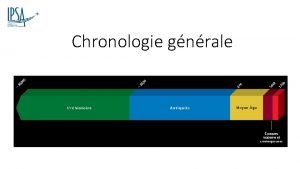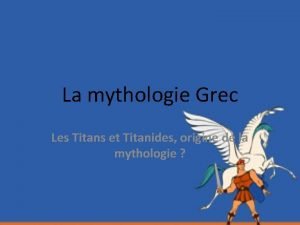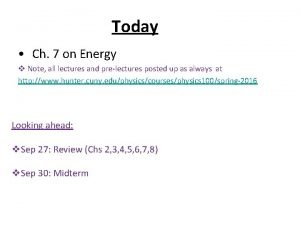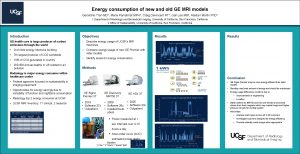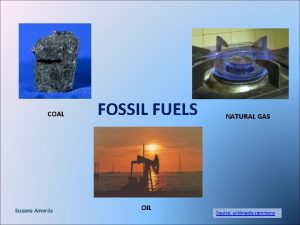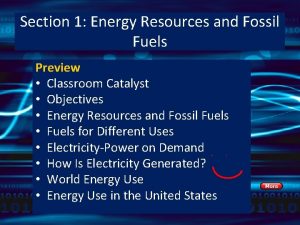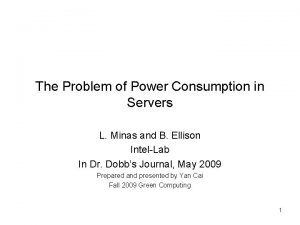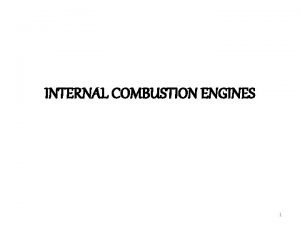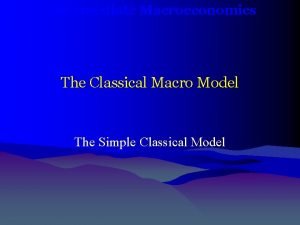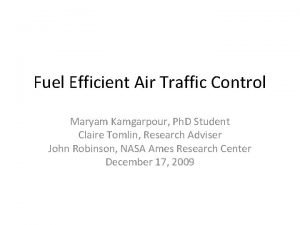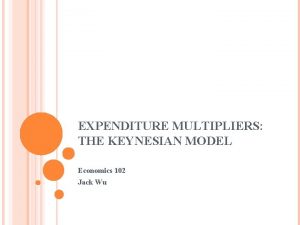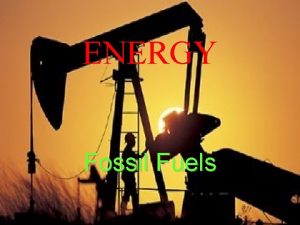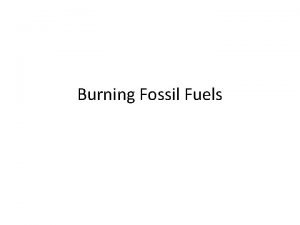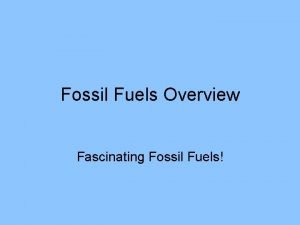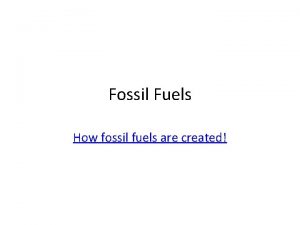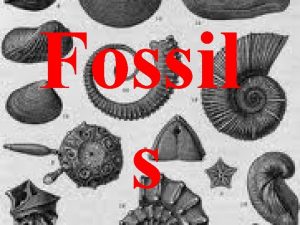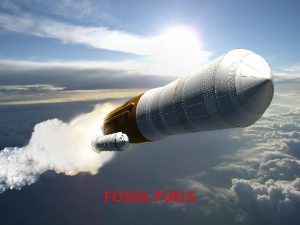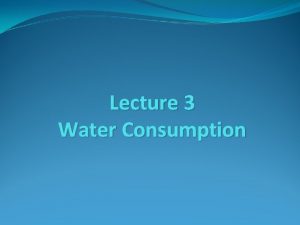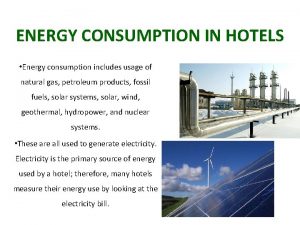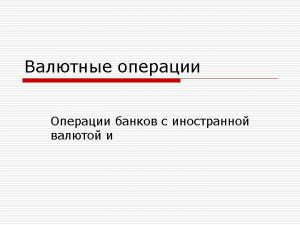Energy Consumption 0 1000 2000 Year 3000 Fossil


























- Slides: 26

Energy Consumption 0 1000 2000 Year 3000 Fossil Fuel Contribution to Global Energy Demand

The constraints of limited/vanishing fossils fuels in the face of an exploding population


The constraints of limited/ vanishing fossils fuels …together with undeveloped or under-developed new technologies

will renew interest in nuclear power Nuclear

volume term grows as nuclei added surface term corrects for surface nuclei symmetry term drives number of protons ≈ neutrons Coulomb term repulsion due to protons pairing energy term increased stability for paired nuclei



The fusing of 2 protons might seem to exemplify the basic process, but there is no 2 -proton state! The fusion of 2 protons actually involves positron decay which converts one of them into a neutron. Q=0. 42 Me. V This is, however, the first step of hydrogen burning in the sun. The sun’s longevity is due to the fact that the accompanying positron identifies this as a weak, i. e. , rare process. It is only slowly consuming its hydrogen. Since this allowed the evolution of life on earth - the weakness of the weak interaction is of significant to us!

The lightest nuclides d deuteron nucleus of deuterium t triton nucleus of tritium 3 H alpha nucleus of helium 4 He Nuclide 2 H 3 H 4 He 2 H And their binding energies Binding energy(Me. V) Number of bonds Total per particle per bond 1 3 6 2. 2 8. 5 28. 0 1. 1 2. 8 7. 0 2. 2 2. 8 4. 7

The Deuteron, 2 H Charge +1. 6 10 -19 C = 1 e mass 1875. 5803 Me. V = 2. 013553 u spin 1 What does this tell us about the nuclear force? magnetic moment, m +0. 85742 b. N total angular momentum, J What does this tell us about the orbital angular momentum? 1 Does not exist in an excited state ( of higher ℓ ).

Odd – Odd Isotopes Isotope Spin, I

The total wave function describing 2 identical fermions must be anti-symmetric to particle exchange. Space Part Spin Part Any part will contribute an independent symmetry of its own.

B A r 1 r 2 Particle Exchange: Parity Operation: A B r 2 r 1 r 2 B r 1 A

B r A A r 2 r 1 r 2 r 2 r 1 Particle Exchange: B r 1 r 2 Parity Operation: rr 1 A r 1 r 2 B r 2 r r 1 A B

The Spherical Harmonics Yℓ, m( , ) ℓ=0 ℓ=1 ℓ=2 ℓ=3

The total wave function describing 2 identical fermions must be anti-symmetric to particle exchange. The space part of an ℓ = 0 state has no change in sign when particle positions are exchanged! so the spin part of this wavefunction must be anti-symmetric. Which would allow only a total spin of 0.

Since Q=0. 42 Me. V is suppressed by its (weak) cross section The simplest fusion event to consider: forming a deuteron from a proton and neutron. Q=2. 23 Me. V but doesn’t exemplify the typical fusion reaction very well:

In the fusion of light elements into medium nuclei the coulomb barrier has to be penetrated from the outside. In fission an elongated neck develops, prolonging scission. In fusion approaching nuclei are flattened by coulomb repulsion, delaying contact. Because of this repulsion between nuclei, fusion is not a naturally occurring process on earth. In order to bring nuclei close enough together for fusion to occur requires kinetic energy.

The sun can make deuterium only through the weak (slow) process: Q=0. 42 Me. V Once there is sufficient deuterium, could consider: Q=23. 8 Me. V but this energy release is larger than that required to remove a proton or neutron from 4 He! So there are more likely products of deuteron fusion (d-d): Q=3. 3 Me. V Q=4. 0 Me. V

Q=4. 0 Me. V liberating ~1 Me. V/nucleon can be performed in the laboratory with a beam of deuterons on a deuterium target. Assuming R 1. 5 fm, the electrostatic potential: 0. 5 Me. V.

A (typical) A beam (even if every deuteron struck a deuterium nucleus and fused) would produce the net rate of energy:

Could a hot deuterium gas have enough thermal kinetic energy to overcome the coulomb barrier and allow nuclei to fuse? With 0. 25 Me. V thermal KE, 2 deuterium atoms meeting in a head-on collision would have the 0. 5 Me. V KE needed. 1 c of heavy water D 2 O has the potential of liberating 5 1012 J even if extracted over the course of 24 hours 50 MW! Ordinary water ~0. 015% D 2 O Fusion energy available in 1 liter, ordinary water = chemical energy available in 300 liters of gasoline

What temperature would provide a mean kinetic energy of 0. 5 Me. V? By comparison, the temperature of the surface of the sun 6000 K.

A fusion reaction involving the heavier hydrogen isotope, tritium is Q=17. 6 Me. V This deuterium-tritium or D-T reaction is currently the reaction of choice in fusion reactor designs. In the center of momentum frame, the 4 He and n share the final energy with equal but opposite momenta: Tn=14. 1 Me. V

Energy production in stars Stars form out of gas clouds which collapse under mutual gravitational attraction. The gravitational potential energy is converted into kinetic energy of the gas molecules - the gas heats up (and its density increases). About 99. 9% of all nuclei in the Universe are hydrogen or helium. 1 H is dominant, accounting for 92. 5% of the nuclei. Only 7. 4% are 2 He. He nuclei are ~4 more massive than hydrogen. So by mass of the Universe is 24% helium. In stars the 1 st fusion processes which can occur must involving protons. The first step in the process is of turning 4 protons into an . From the mass difference: this should release 26. 7 Me. V of energy.
 3000+3000+2000
3000+3000+2000 Titans et titanides
Titans et titanides 3000+2500+2000
3000+2500+2000 A 1000 kg car and a 2000 kg car is hoisted the same height
A 1000 kg car and a 2000 kg car is hoisted the same height Geraldine tran
Geraldine tran Dynamicresolution android
Dynamicresolution android Happy new year 2000
Happy new year 2000 Fossil
Fossil How does fossil fuel produce energy
How does fossil fuel produce energy Pros and cons of oil energy
Pros and cons of oil energy Fossil fuel deposits
Fossil fuel deposits Energy energy transfer and general energy analysis
Energy energy transfer and general energy analysis Energy energy transfer and general energy analysis
Energy energy transfer and general energy analysis Year 2 leavers poem
Year 2 leavers poem World tea consumption
World tea consumption Rdimm power consumption
Rdimm power consumption Canadian tea market overview
Canadian tea market overview Drinking fountain
Drinking fountain Fat overconsumption
Fat overconsumption Autonomus spending
Autonomus spending Indicated horsepower formula
Indicated horsepower formula Keynesian consumption function
Keynesian consumption function Consumption function formula
Consumption function formula Maryam kamgarpour
Maryam kamgarpour Basic food preparation meaning
Basic food preparation meaning Consumption expenditures formula
Consumption expenditures formula Ethics of food production and consumption
Ethics of food production and consumption
